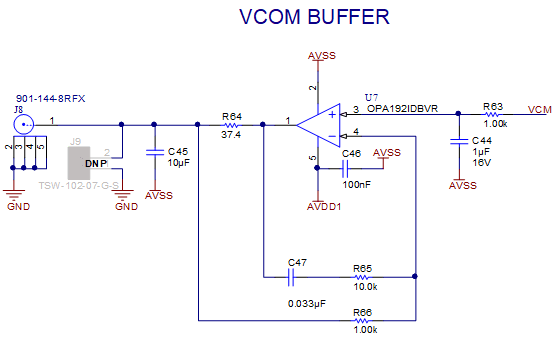SBAU351 April 2021
2.4 VCOM Buffer
The circuit shown in Figure 2-3 buffers the VCM signal from the ADC and connects this signal to the J8 SMA connector. This process is useful if the VCOM signal must be connected to an external piece of test equipment to set the common-mode voltage. A common use case is to connect this signal to the Audio Precision SYS-2722 to set the signal generators common-mode output. This circuit is not required in your end application and is only used for testing purposes.
 Figure 2-3 VCOM Buffer
Figure 2-3 VCOM Buffer